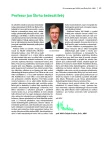SOLOSTAR study demonstrated high levels of patient satisfaction with the use of the insulin pen SoloStar® in the Czech Republic
Authors:
Tomáš Edelsberger 1; Michal Policar 2; Dita Pospíšilová 3; Jana Psottová 4; Jana Houdová 4; Denisa Janíčková Žďárská 5
Authors‘ workplace:
Diabetologická ambulance Krnov, vedoucí pracoviště MUDr. Tomáš Edelsberger
1; Diabetologické centrum Jihlava, vedoucí pracoviště MUDr. Michal Policar
2; Diabetologická ambulance Kroměříž, vedoucí pracoviště MUDr. Dita Pospíšilová
3; Diabetologická ambulance Praha 10, vedoucí pracoviště MUDr. Jana Psottová
4; Interní klinika 2. LF UK a FN Motol Praha, přednosta prof. MUDr. Milan Kvapil, CSc., MBA
5
Published in:
Vnitř Lék 2014; 60(9): 697-704
Category:
Tato práce byla prezentována formou posteru na 50. Diabetologických dnech v Luhačovicích ve dnech 10. – 12. 4. 2014.
Overview
Introduction:
The aim of the observational, prospective and non-interventional survey SOLOSTAR was to obtain, in a clinical practice setting in the Czech Republic, information about patient satisfaction with the use of the pre-filled insulin pen SoloStar.
Methodology:
1 805 patients suffering from type 1 or 2 diabetes who began using the pen SoloStar were observed for 3 to 4 months. Satisfaction of patients with SoloStar and with its particular features was evaluated in the group of all patients and in subgroups defined by demographic parameters including the type of handicap. Patients also compared SoloStar with the pens used before the entry into the survey.
Results:
98.3 % of patients rated overall satisfaction with the pen SoloStar as “excellent” and “good” (the highest and second highest rating on a 5-point scale). Demographic criteria, including visual handicap and manual dexterity handicap, did not have any statistically significant effect on the rating of the overall satisfaction with SoloStar. Features of SoloStar were rated as “excellent” and “good” by more than 90% of patients. Higher rating of some of the features of SoloStar was awarded mostly by patients without prior experience with insulin application. Patients who used other insulin applicators before entering into the survey were more satisfied with the pen SoloStar than with the previously used applicator and most of them rated the use of SoloStar (93.1 %) and insulin application with SoloStar (83.5 %) as “much easier” and “easier” (the highest and second highest rating on a 5-point scale) in comparison with the previously used pen.
Conclusion:
The use of the pen SoloStar in a clinical practice setting in the Czech Republic is associated with high levels of satisfaction of patients, including handicapped patients. In addition, patients preferred SoloStar over insulin pens used before the entry into the survey.
Key words:
diabetes mellitus – insulin pen – patient satisfaction
Sources
1. Asche CV, Shane-McWhorter L, Raparla S. Health economics and compliance of vials/syringes versus pen devices: a review of the evidence. Diabetes Technol Ther 2010; 12(Suppl 1): S101-S108.
2. Xie L, Zhou S, Wei W et al. Does pen help? A real-world outcomes study of switching from vial to disposable pen among insulin glargine-treated patients with type 2 diabetes mellitus. Diabetes Technol Ther 2013; 15(3): 230–236.
3. Lee WC, Balu S, Cobden D et al. Medication adherence and the associated health-economic impact among patients with type 2 diabetes mellitus converting to insulin pen therapy: an analysis of third- -party managed care claims data. Clin Ther 2006; 28(10): 1712–1725.
4. Reimer T, Hohberg C, Pfützner AH et al. Intuitiveness, instruction time, and patient acceptance of a prefilled insulin delivery device and a reusable insulin delivery device in a randomized, open-label, crossover handling study in patients with type 2 diabetes. Clin Ther 2008; 30(12): 2252–2262.
5. Clarke A, Spollett G. Dose accuracy and injection force dynamics of novel disposable insulin pen. Expert Opin Drug Deliv 2007; 4(2): 165–174.
6. Bode A. Development of the SoloStar insulin pen device: design verification and validation. Expert Opin Drug Deliv 2009; 6(1): 103–112.
7. Penfornis A, Horvat K. Dose accuracy comparison between SoloStar and flexpen at three different dose levels. Diabetes Technol Ther 2008; 10(5): 359–362.
8. Hermanns N, Kulzer B, Haak T. Dosing accuracy with a novel pen device (SoloStar) as performed by patients with diabetes in a Clinical setting. Diabetes Technol Ther 2008; 10(4): 322–327.
9. Haak T, Edelman S, Walter C et al. Comparison of usability and patient preference for the new disposable insulin device SoloStar versus Flexpen, lilly disposable pen, and a prototype pen: an open-label study. Clin Ther 2007; 29(4): 650–660.
10. Hancu N, Czupryniak L, Genestin E et al. A Pan-European and Canadian prospective survey to evaluate patient satisfaction with the SoloStar insulin injection device in type 1 and type 2 diabetes. J Diabetes Sci Technol 2011; 5(5): 1224–1234.
11. Carter J, Roberts A. Usability of a pre-filled insulin injection device in a 3-month observational survey of everyday practice in Australia. Curr Med Res Opin 2008; 24(10): 2741–2749.
12. Williams R, Airey M, Baxter H et al. Epidemiology of diabetic retinopathy and macular oedema: a systematic review. Eye (Lond) 2004; 18(10): 963–983.
13. Zvolský M. Činnost oboru diabetologie, péče o diabetiky v roce
2012. ÚZIS ČR. Aktuální informace č. 24/2013. Dostupné z WWW: <http://www.uzis.cz>.
Labels
Diabetology Endocrinology Internal medicineArticle was published in
Internal Medicine

2014 Issue 9
Most read in this issue
- Life expectancy of people with type 1 diabetes in the past and today
- Gliptins: a safe and effective treatment of diabetes mellitus
- Insulin resistance – its causes and therapy possibilities
- AGEs and RAGE – advanced glycation end-products and their receptor in questions and answers
